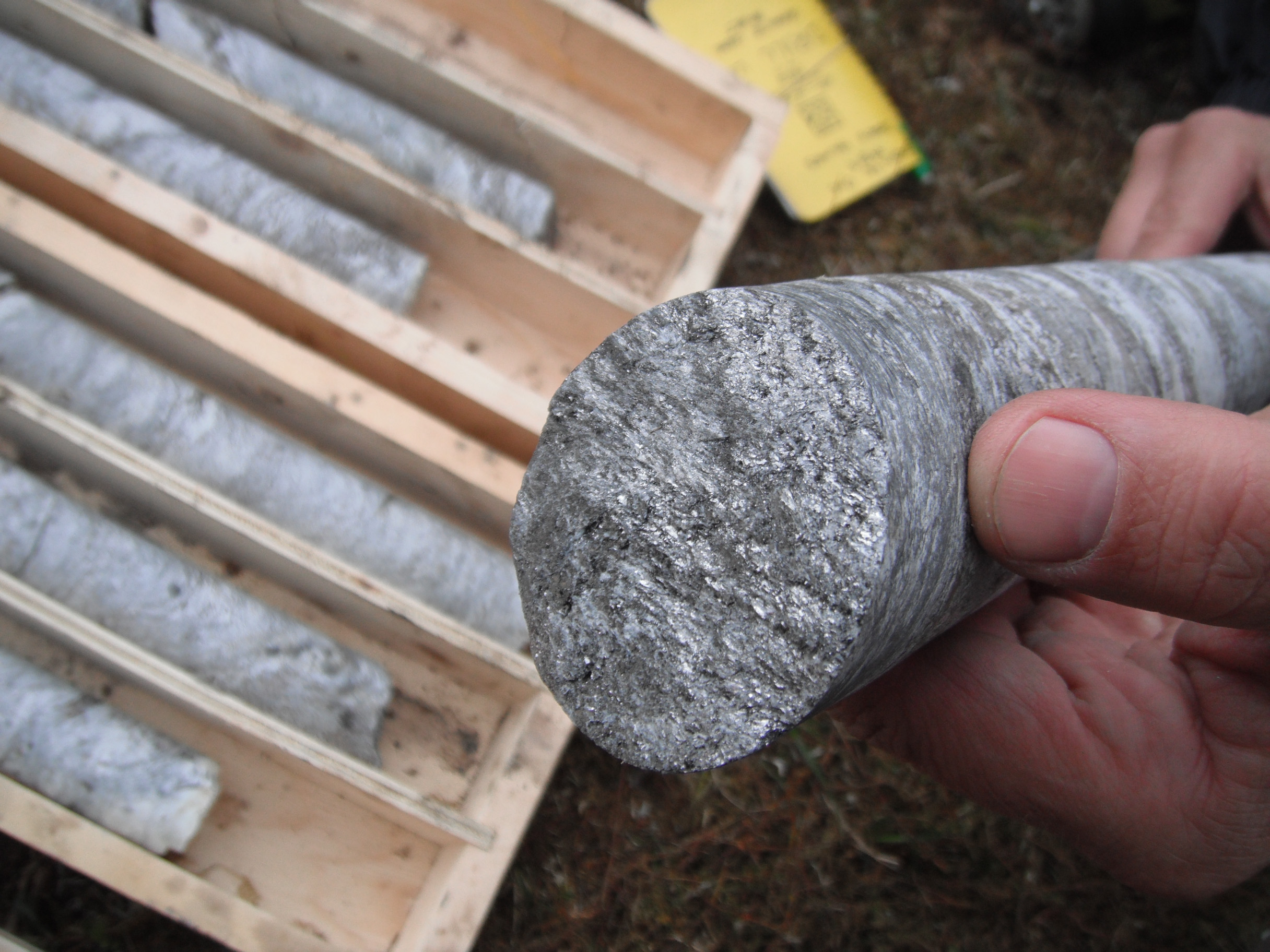Graphite One began another round of core drilling earlier this summer at its Graphite Creek project site about 37 miles north of Nome, near Mary’s Igloo. The core drilling is just one of many steps Graphite One must take before mining operations can commence, an event which won’t happen for several years.
The company is drilling to collect data for its feasibility study, which will help the company to better understand what they will need to properly and efficiently mine graphite.
Core drilling involves extracting cylindrical segments of rock, called core samples from the ground. Geology teams then study the core samples to determine their mineral makeup. By taking core samples at regular intervals, Graphite One can create a three-dimensional map of the planned mining site.
Graphite One Permitting Manager Ed Fogels explained that core drilling has minimal impact on the environment when performed properly.
“The drilling fluids that are used are typically very benign and not a real issue. You do have your fuels and hydraulic fluids in the equipment that we have to be very careful of, but those are pretty easy to contain,” Fogels said.
As for the holes themselves, they are filled in after sampling is complete to prevent leakage. Some are left open with instruments inside to measure groundwater, but these are eventually filled as well.
The U.S. Department of the Interior named graphite a “critical mineral” in 2018. Stanley Foo, Graphite One’s Chief Operations manager, explained that this is largely due to the use of graphite in the production of lithium-ion batteries.
“And we’re very encouraged to see the current administration continue to focus on identifying the need for the United States to develop domestic resources, graphite and other critical minerals, rather than continuing to be dependent on China and other — I’ll say ‘questionable’ — sources for those very important mineral resources that are going to be required for the clean energy future of the United States,” Foo said.
In 2019, Sen. Lisa Murkowski came out in favor of projects like the Graphite Creek mine.
“Whether we realize it or not, minerals are the foundation of our modern society; we use them in just about everything. But our foreign dependence threatens our national security and is driving jobs and industries — whether electronics, or electric vehicles, or something else — to other countries,” Murkowski said at a U.S. Senate Committee on Energy and Natural Resources hearing on mineral security. Murkowski chaired the committee at the time, and remains a committee member today.
Gov. Mike Dunleavy recently visited Nome to discuss the city’s planned deep draft port, and specifically mentioned Graphite One as a company that would benefit from such facilities.
“Having a larger port here is going to enable Nome to handle more capacity — stuff coming out of, potentially, Graphite One, the graphite find up north of here,” Dunleavy said.
In addition to the new drilling to collect data for the feasibility study, Graphite One also announced that its pre-feasibility study is on track for completion in the fourth quarter of 2021. KNOM reported last year that the company had expected that study to be complete by fall of 2020. Foo explained that the delay was primarily a financing issue brought on by the pandemic.
“Concerns about the global pandemic seemed to improve as we got into 2021, investor interest came back. We were very successful this year in getting the financing in place to complete the next stage of work,” Foo said.
The pre-feasibility study looks at more than the properties of the site itself — it also forecasts engineering and design requirements of the potential mining operation.
“At this point, it really is focused on the equipment that would be required, and the capital costs of that equipment, the overall investment,” Foo said.
In 2014, Graphite One put together a Subsistence Advisory Council, made up of residents of communities near the mining site — Brevig Mission, Teller, and Mary’s Igloo. The members of the council were selected by the communities, not by Graphite One. The council meets regularly, usually about once a year, to discuss the project and its impact on members of those communities that rely on subsistence. Joy Huntington, owner of Uqaqti Consulting, which handles Graphite One’s public communications, described some of the discussions that took place at the most recent council meeting.
“Some of the focus of our conversation at our last meeting was in terms of what species were being looked at. … In the scope of the fisheries studies, we’ve been given information from the Subsistence Advisory Council on species that, you know, we were then able to look at in more detail. And so that’s kind of helped us to do the right studies based on what the communities are most concerned about as far as fishing species,” Huntington said.
So far, Graphite One seems to be handling things well, according to Henry Olanna Jr. of Brevig Mission, a member of the Subsistence Advisory Council.
“I think they’re doing a good job over there, containing their campsites and everything,” Olanna said.
The council has not met recently due to concerns about the COVID-19 pandemic, Olanna said.
After Graphite One completes the pre-feasibility and feasibility studies, a long permitting process begins. Even if all goes according to plan, mining operations won’t be underway any time soon.
“We’re several years away from mining actually occurring on the site. We’re still very much an exploration project,” Foo said.
Foo expects the feasibility study to begin early next year and conclude in 2023.
Image at top: Core samples taken from Graphite One’s summer 2012 exploration program. Photo: Graphite One Resources.





